The Statehood Quarter Program, a beloved initiative by the U.S. Mint, captivated the nation from 1999 to 2008. Millions began collecting these unique 25-cent coins, each celebrating a different state. While most circulated state quarters hold just their face value, a dedicated collector knows that some of these coins are significantly more valuable. Are you sitting on a potential treasure? Let’s dive into the world of State Quarters Worth Money and uncover which ones could bring a surprising return.
The Allure of State Quarters: More Than Just 25 Cents
The beauty of coin collecting, especially state quarters, lies in the thrill of the hunt and the potential for discovering something special. While everyday state quarters you find in your change are typically worth only 25 cents, certain factors can dramatically increase their value. These factors include:
- Mint Condition: Uncirculated coins, especially those in pristine “mint state,” are highly sought after by collectors. The less wear and tear, the more valuable the coin.
- Low Mintage: The U.S. Mint produced varying quantities of each state quarter. Lower mintage figures for certain states mean fewer coins are available, increasing their rarity and value.
- Minting Errors: Mistakes during the minting process, known as errors, can transform an ordinary coin into a highly desirable and valuable collectible.
Understanding these elements is key to identifying state quarters worth money. Let’s explore some of the most valuable examples that could be hiding in your collection or even your pocket change.
Top State Quarters Worth Money: Coins to Watch For
Here’s a rundown of some of the most valuable state quarters, highlighting what makes them special and why they command higher prices in the numismatic market.
1. 1999-P Delaware Experimental State Quarter: The Rarity of an Alloy Test
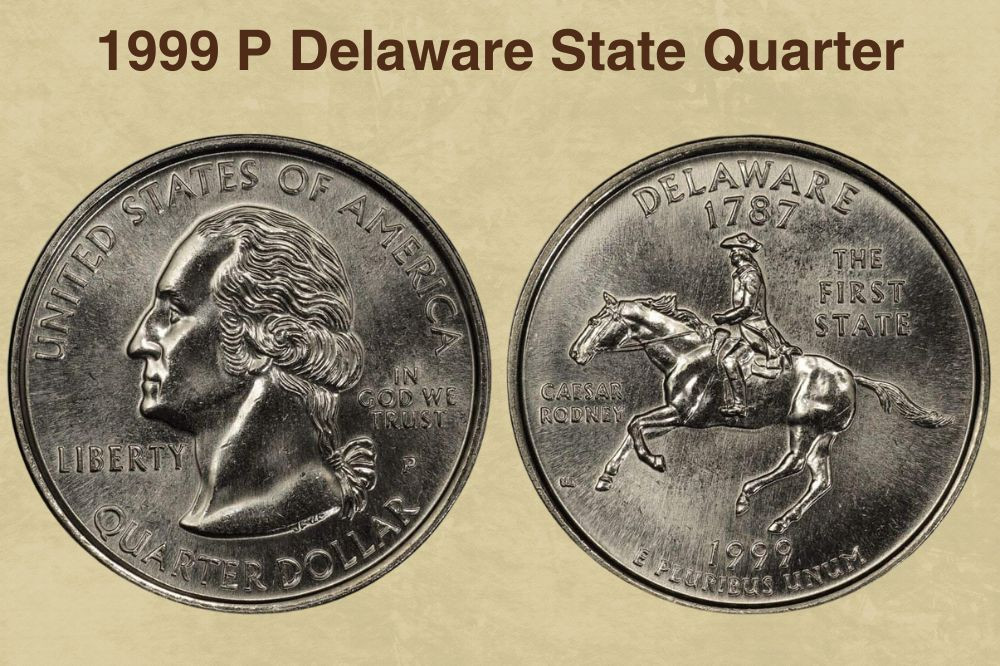 1999 P Delaware State Quarter
1999 P Delaware State Quarter
The 1999 Delaware state quarter holds a unique place in history as the very first coin issued in the Statehood Quarter Program. But even more intriguing are the experimental versions struck in Philadelphia (P mint mark). In 1999 and 2000, the Mint experimented with different metal alloys to find the ideal composition for the Sacagawea dollar coin. A very limited number of state quarters, including Delaware, were struck using these experimental alloys.
These 1999-P Experimental Delaware State Quarters are exceptionally rare. One graded MS66 achieved an impressive $4,888 at auction, showcasing the significant value of these experimental pieces. Their unique metallic composition and scarcity make them a prime target for serious collectors searching for state quarters worth money.
2. 2003-D Maine State Quarter: High Grade Rarity from the Pine Tree State
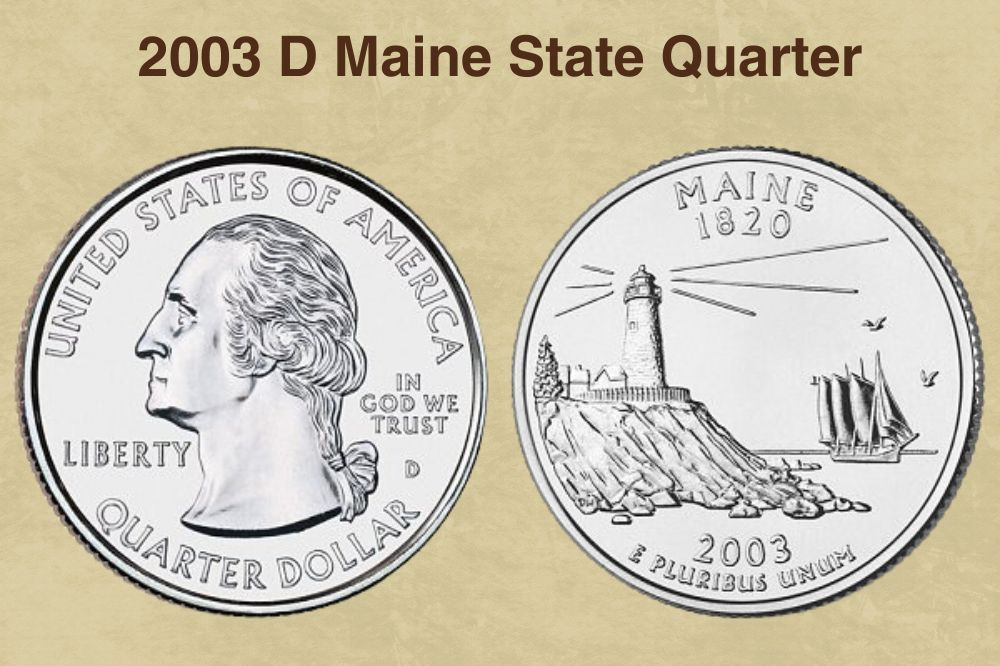 2003 D Maine State Quarter
2003 D Maine State Quarter
The 2003-D Maine state quarter, minted in Denver (D mint mark), depicts the iconic Pemaquid Point Light and a sailing vessel, symbolizing Maine’s maritime heritage. While circulated examples are common, finding this coin in mint state, particularly in high grades like MS67 and above, is exceptionally challenging.
The rarity in high grades drives up the value. A 2003-D Maine state quarter graded MS68 fetched a remarkable $2,300 in 2017. Collectors prize these pristine Maine quarters, making them highly sought after state quarters worth money.
3. 2000-P South Carolina State Quarter: Palmetto State Gems in Mint Condition
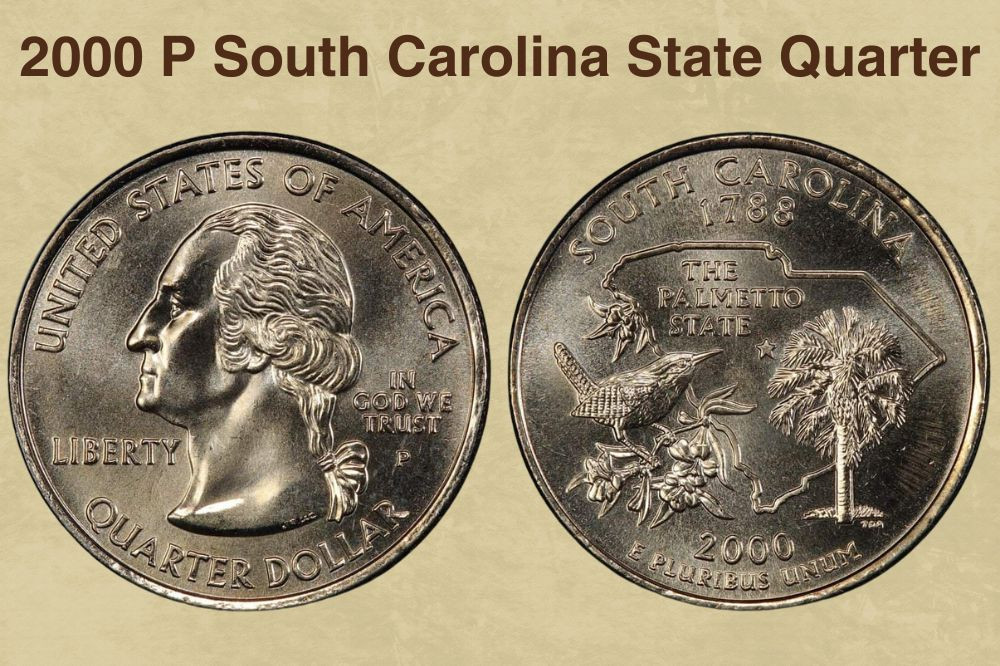 2000 P South Carolina State Quarter
2000 P South Carolina State Quarter
Representing the “Palmetto State,” the 2000-P South Carolina state quarter, minted in Philadelphia, features the Carolina Wren, the Palmetto tree, and the state flower, the Yellow Jessamine. Like the Maine quarter, the South Carolina quarter is not inherently rare in circulation. However, mint state examples, especially those graded MS68 and higher, are surprisingly scarce.
The Professional Coin Grading Service (PCGS) reports that very few South Carolina P state quarters have been graded MS69. One such gem, graded MS69, was valued at an astounding $8,000 in 2018. This exemplifies how mint condition dramatically elevates the value of state quarters worth money.
4. 2004-D Wisconsin State Quarter “Extra Leaf” Error: Maize Field Mistake = Big Value
The 2004 Wisconsin state quarter is famous for its intriguing “Extra Leaf” error. These error coins depict an extra leaf on the corn stalk on the reverse design, coming in two varieties: “Extra Leaf Low” and “Extra Leaf High.” This extra leaf is a minting anomaly, absent on standard Wisconsin quarters, making these error coins highly collectible.
The Wisconsin Extra Leaf quarters are considered among the most significant and valuable errors within the entire Statehood Quarter Program. A 2004-D Wisconsin state quarter “Extra Leaf Low” graded MS67 commanded a record-breaking $6,000 at auction in 2020. These error varieties are prime examples of state quarters worth money due to their rarity and unique story.
5. 1999-P Connecticut State Quarter Experimental Alloy: Another Sacagawea Dollar Test Coin
 1999 P Connecticut State Quarter
1999 P Connecticut State Quarter
Similar to the Delaware experimental quarter, the 1999-P Connecticut state quarter was also struck on experimental planchets as part of the Sacagawea dollar alloy testing. These error coins are incredibly scarce due to the limited number minted for testing purposes.
Distinguishing an experimental 1999-P Connecticut quarter involves looking for key features: it’s heavier and thicker than a regular quarter, exhibits a golden hue instead of a greenish tint, and possesses a smooth edge rather than a reeded edge. A 1999-P Connecticut state quarter experimental alloy graded MS69 reached a staggering $10,500 in 2018. These error coins are top-tier examples of state quarters worth money because of their extreme rarity and connection to numismatic history.
6. 1999-P Delaware State Quarter: First in the Series, Mint State Desirability
The standard 1999-P Delaware state quarter, beyond the experimental alloy version, also holds significant collector interest. As the first coin in the Statehood Quarter Program, it represents the beginning of this popular series. Many were saved when initially released, but finding them in pristine mint state condition remains a challenge.
This scarcity in high mint state grades elevates its value. A 1999-P Delaware state quarter graded MS66 sold for $4,888 in 2008. The historical significance and demand from collectors contribute to the value of these early state quarters worth money.
7. 1999-P Pennsylvania MS 67 Struck on an Experimental Planchet: Keystone State Test Coin
Pennsylvania was another state involved in the 1999 experimental alloy testing for the Sacagawea dollar. The 1999-P Pennsylvania state quarter struck on an experimental planchet is, therefore, another rare and valuable error coin from this period.
Due to their scarcity, these experimental Pennsylvania quarters are highly prized. A 1999-P Pennsylvania MS67 quarter struck on an experimental planchet is valued at approximately $2,520 according to the Numismatic Guaranty Company (NGC). These test coins underscore the value that mint errors and unique circumstances can bring to state quarters worth money.
8. 2006-D North Dakota State Quarter: Sunshine and Scarcity in High Grades
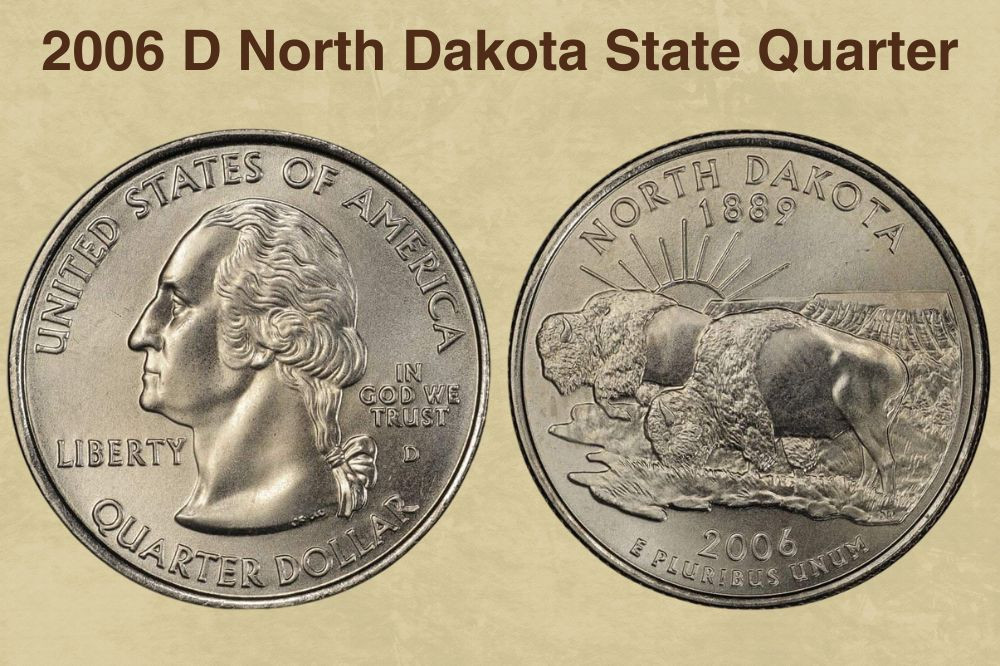 2006 D North Dakota State Quarter
2006 D North Dakota State Quarter
The 2006-D North Dakota state quarter, depicting bison and a sunset over rolling hills, is readily found in circulated condition and worth face value in that state. However, mint state examples, particularly in higher grades, are surprisingly scarce.
While MS60 and above examples exist, the population dramatically decreases at MS67 and higher. A rare 2006-D North Dakota state quarter graded MS68 achieved $3,760 at auction in 2017. This highlights how even relatively recent state quarters can become valuable when found in exceptional condition.
9. 2004-P Texas State Quarter “Grease Strike Through” Error: Lone Star State Error Coin
The 2004-P Texas state quarter, emblazoned with a star, lasso, and map outline, features a notable error variety: the “Grease Strike Through.” This error occurs when grease accumulates in the die, obstructing some design details during the striking process.
The 2004-P Texas state quarter with a “grease strike-through” error is a rare find. One example graded MS69 reached $10,000 in value. Even without the error, a Texas quarter graded MS69 or higher can be worth around $3,055, showcasing the inherent value of high-grade Texas state quarters worth money.
10. 2008-D New Mexico State Quarter: Land of Enchantment, High Grade Elusiveness
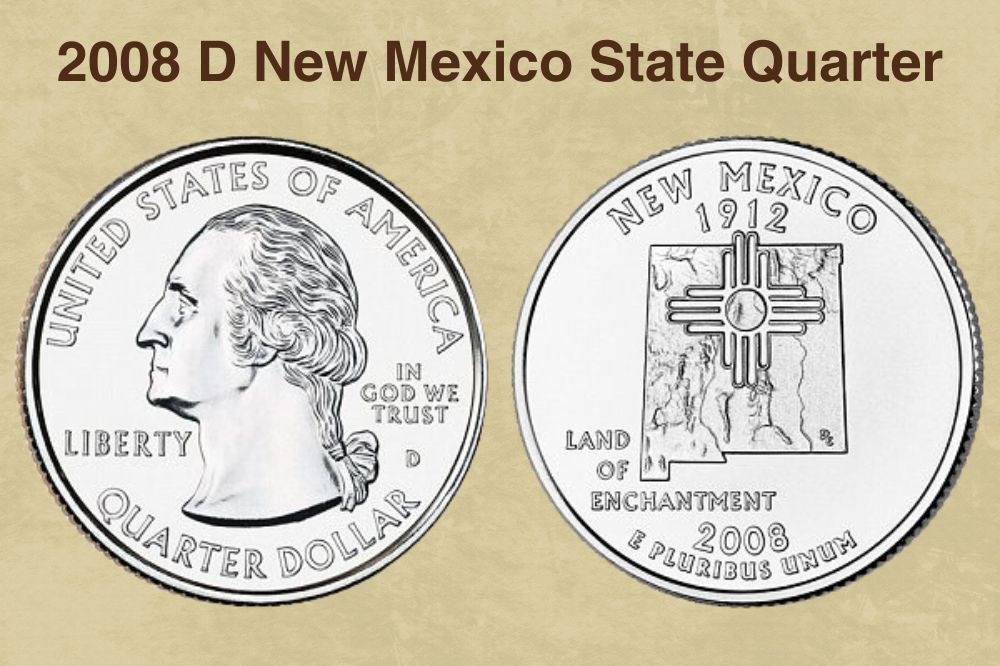 2008 D New Mexico State Quarter
2008 D New Mexico State Quarter
The 2008-D New Mexico state quarter, the final issue in the original Statehood Quarter Program, depicts the Zia sun symbol and the state’s nickname, “Land of Enchantment.” While a substantial number were minted, 2008-D New Mexico quarters in mint state are surprisingly difficult to find, especially in high grades.
Denver-minted (D) examples are generally better struck and more attractive than Philadelphia (P) coins. The 2008-D New Mexico state quarter is so scarce in high grades that even an MS62 example can fetch around $2,500. This surprising rarity in mint state makes even lower mint state examples of these later state quarters worth money.
11. 1999-D Connecticut State Quarter: Charter Oak in Demand in Top Grades
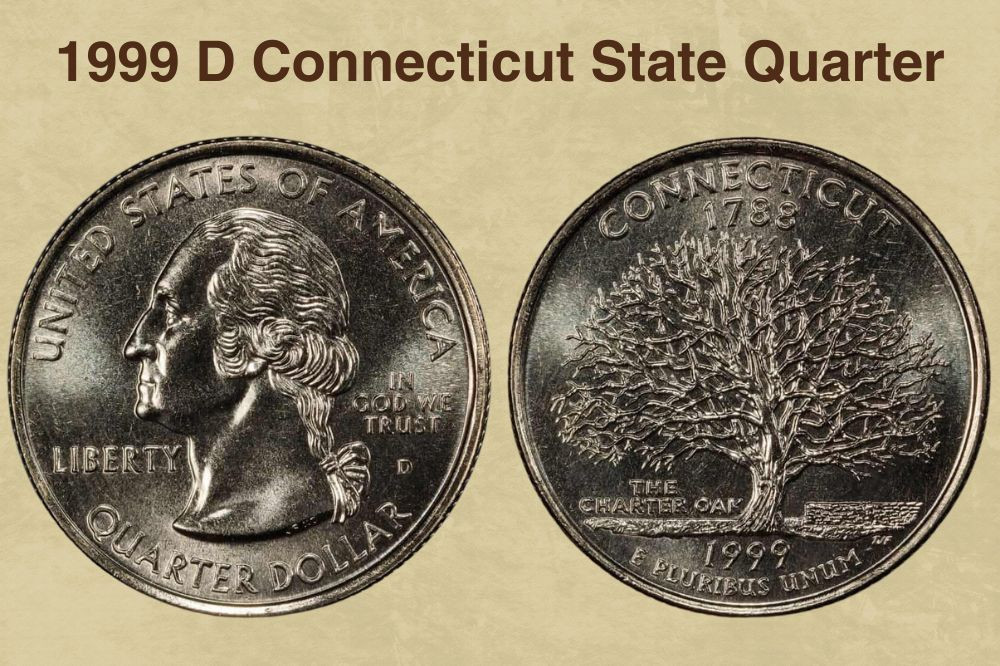 1999 D Connecticut State Quarter
1999 D Connecticut State Quarter
The 1999-D Connecticut state quarter, featuring the Charter Oak tree, was among the first state quarters released. Denver-minted examples are known for their strong strike and well-preserved details. While millions were released, many were hoarded, making mint state examples readily available up to MS67. However, specimens graded MS68 and higher become considerably rarer.
A 1999-D Connecticut quarter graded MS68 sold for $2,300 in 2018. This demonstrates that even for relatively common early state quarters, exceptional condition can significantly increase their value.
12. 2006-P Nebraska State Quarter: Chimney Rock and Prairie Sun in Mint State
The 2006-P Nebraska state quarter showcases Chimney Rock and a covered wagon, representing the state’s pioneer history. In circulated condition, these quarters are worth only face value. However, mint state examples are much scarcer and can command substantial prices.
A 2006-P Nebraska state quarter graded MS68 achieved $2,350 at auction in 2017. This underscores the importance of mint state condition when seeking state quarters worth money, even for coins from later in the program.
13. 1999-P Georgia State Quarter “Deep Die Cap, Double Struck” Error: Peach State Error Rarity
The 1999-P Georgia state quarter, depicting a peach, live oak, and banner, is known for a dramatic error: the “Deep Die Cap, Double Struck.” Die cap errors occur when a struck coin adheres to the die, impacting subsequent strikes. In this case, a Georgia quarter stuck to the reverse die, resulting in a blurred or “mushy” reverse design on subsequent coins.
The 1999-P Georgia state quarter “Deep Die Cap, Double Struck” error is exceptionally rare. One example graded MS65 reached a record-breaking $4,200 in 2022. This type of dramatic minting error can transform an ordinary state quarter into a highly valuable and sought-after collectible.
Unlocking the Value in Your State Quarter Collection
While the vast majority of state quarters are worth only 25 cents, understanding the factors that contribute to their value can turn your casual collecting into a rewarding pursuit. Focus on seeking out state quarters in the best possible condition – uncirculated, mint state coins are where the real value lies. Keep an eye out for potential errors, especially the well-documented Wisconsin Extra Leaf and Texas Grease Strike Through varieties. States like Maine, Oklahoma, Missouri, Wisconsin, and Alabama are known for having lower mintage figures, making their quarters potentially scarcer and more valuable in mint condition.
By knowing what to look for, you can increase your chances of finding state quarters worth money and adding truly valuable pieces to your collection. Happy hunting!
